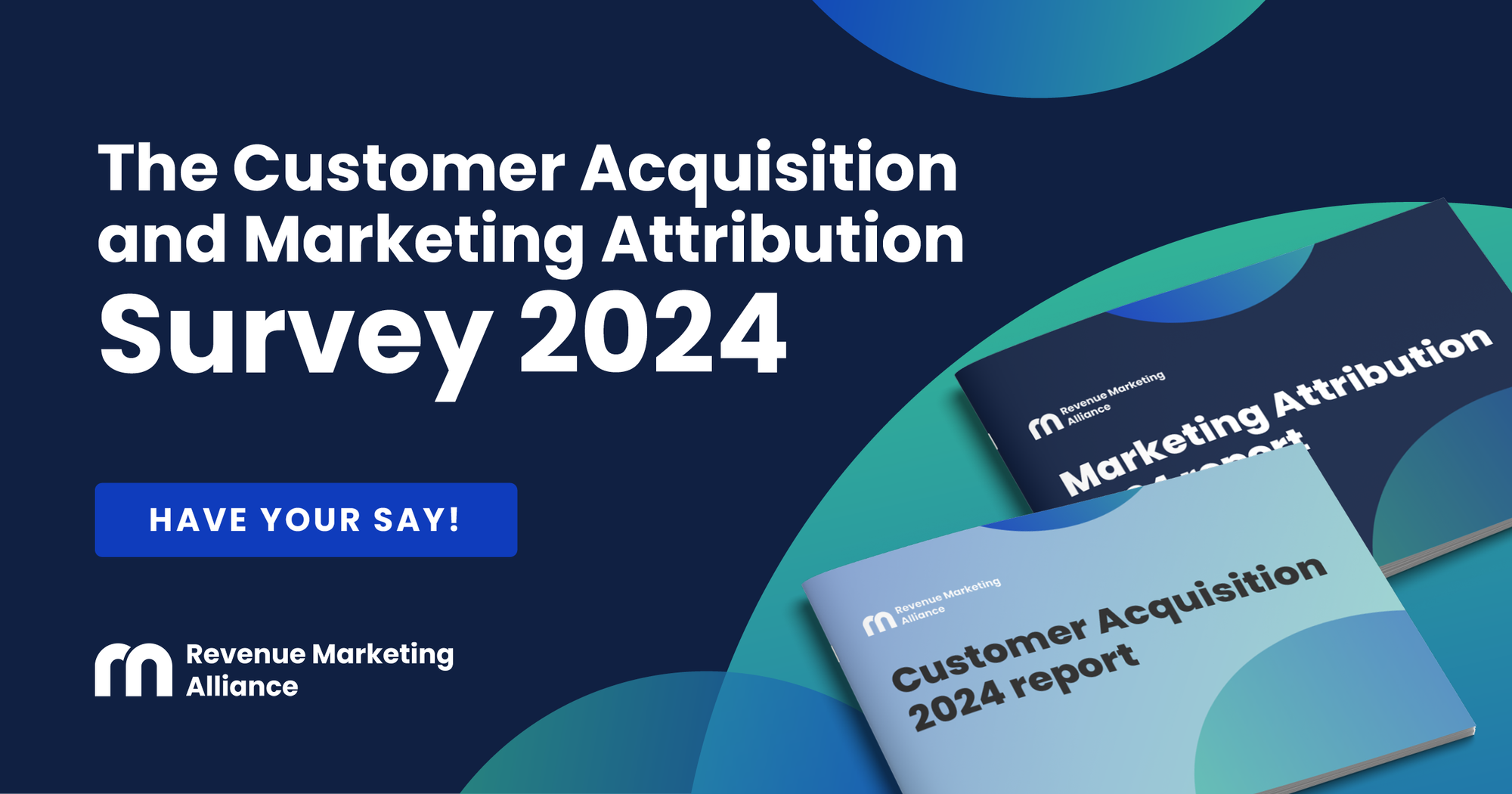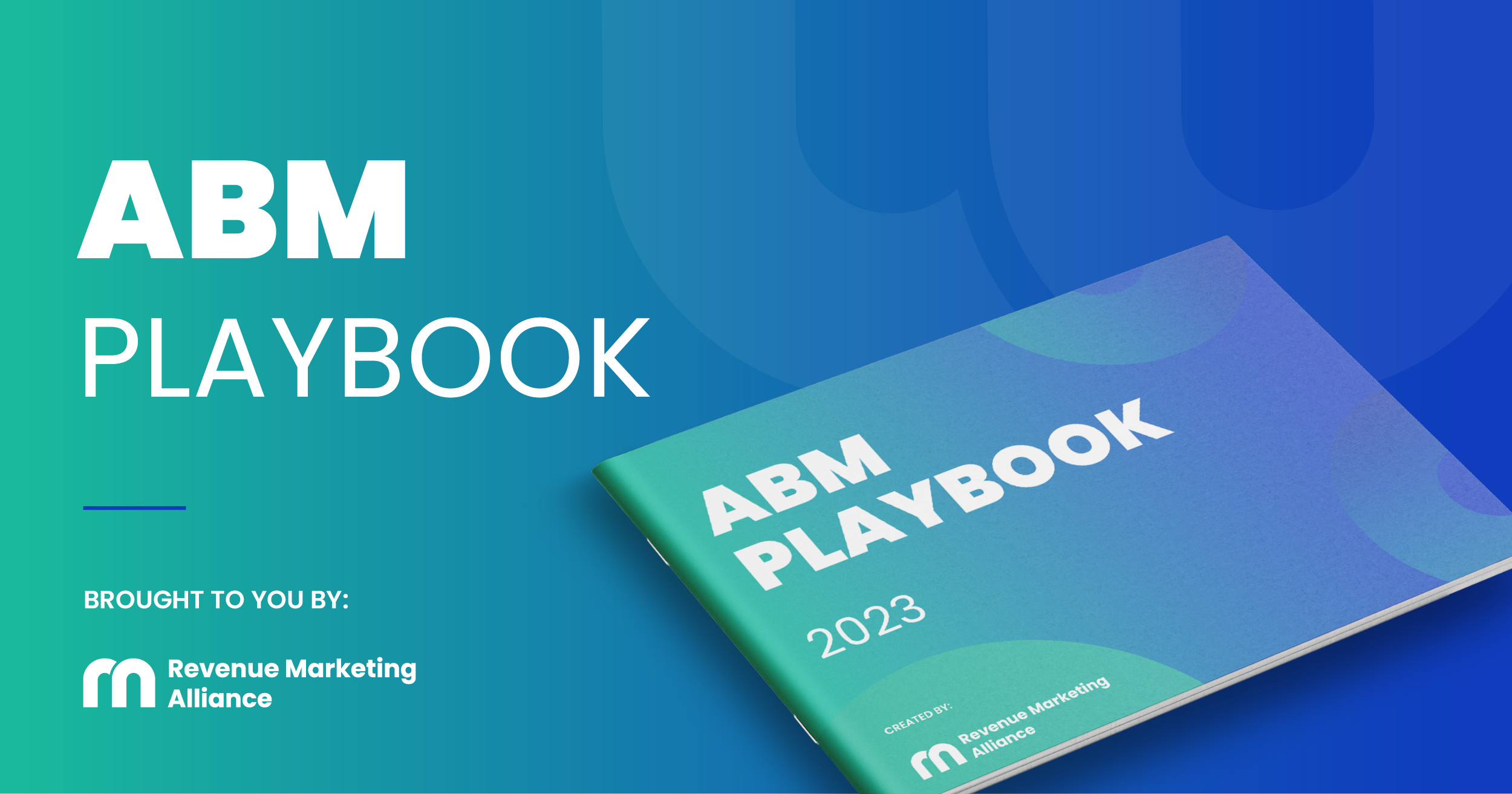Account-based marketing (ABM) is a strategy that focuses on aligning and targeting your sales and marketing toward a specific set of high-value accounts.
By focusing on customers that matter, you’ll be able to close deals faster and significantly increase your revenue.
Businesses that have their marketing and sales aligned are 67% better at closing deals than those that don’t, so implementing a successful ABM strategy into your business is worth your time.
However, to truly reap the benefits of ABM, you need to be able to track the progress of your strategy and identify what’s working well and what needs improving.
This is where KPIs (key performance indicators) come in.
KPIs essentially allow you to track the progress of a marketing campaign. Unless you’re brand new to marketing, you’re probably familiar with KPIs and have a good idea of what KPIs you should be using to track a marketing campaign.
However, as ABM focuses more on the alignment of sales and marketing and targeting a specific group of customers, using traditional KPIs such as conversion rates is not enough (although you should still be tracking these!). You also need to be using KPIs that measure specific elements of your ABM campaign.
This article will provide an overview of the most important KPIs for ABM and explain how these KPIs can be used to track the progress of your strategy.
But first, let’s take a look at the benefits of account-based marketing.
What are the benefits of account-based marketing?
Companies today are constantly seeking new ways to stand out and capture the attention of their most valuable prospects. Enter account-based marketing – a strategic approach that flips the traditional lead-based model on its head.
ABM laser-focuses your marketing efforts on specific, high-value accounts that closely align with your ideal customer profile (ICP). It's a tailored, account-centric strategy that treats each target account as a unique market of one.
So, what makes ABM so effective? For starters, it allows you to concentrate your resources – be it budget, content, or personnel – on the accounts that truly matter to your business. By honing in on a select group of key prospects, you can deliver personalized, highly relevant messaging that resonates far more deeply than generic, one-size-fits-all campaigns.
But the benefits don't stop there. ABM fosters unprecedented alignment between your marketing and sales teams, uniting them around a shared set of prioritized accounts and equipping them with the insights they need to engage those accounts more effectively.
No more disjointed efforts or mixed messages – just a seamless, coordinated approach that maximizes the impact of every interaction.
And let's not forget the revenue implications. With ABM, you're not just generating leads – you're cultivating long-term, mutually beneficial relationships with your most valuable customers and prospects.
Focusing your efforts on accounts that offer the highest potential lifetime value enables you to drive more revenue from your existing customer base while simultaneously increasing your win rates with new business.
Buyer expectations are constantly evolving, and ABM enables you to stay ahead of the curve, delivering the personalized, account-specific experiences that modern customers crave.
It's a strategic investment in your most critical relationships – one that can pay dividends in the form of increased customer loyalty, accelerated deal cycles, and ultimately, sustainable revenue growth.
Now let’s get into the KPIs you need to focus on to get the most out of your ABM.
ABM KPIs: Engagement rates
Engagement rates are a fundamental KPI that sheds light on how well your target accounts are interacting with your content and messaging.
Engagement rates essentially tell you how involved your target accounts are with your content. Continually measuring the engagement of your target accounts will allow you to see what accounts are falling behind and require more attention. You can then alter your strategy for these accounts to help to increase their interest.
You can also identify what type of content is receiving the most traction by looking at engagement. This’ll make it clear to you what content is worth investing more time into creating, identify what exactly attracts new accounts, and keep track of what your current accounts are interested in.
There are a variety of ways to measure engagement rates. What you choose will depend on your specific goals and what engagement means to you.
Social media metrics
Social media platforms offer a rich playground for engaging with your target accounts. Tracking metrics such as likes, comments, shares, and lead generation from your social media efforts can provide valuable insights into the resonance of your content and the channels that resonate most with your audience.
Examples of social media KPIs:
- Number of likes/reactions
- Number of comments on your posts
- Number of shares of your content
- Content that’s generated the most interest
- Number of leads generated
- Number of new followers
- Conversion rate
- Cost per lead from campaigns
Knowing these metrics will allow you to assess how well you’re utilizing social media platforms to reach your target accounts and identify any areas for improvement.

Email metrics
Email remains a powerful tool in ABM campaigns. Monitoring open rates, click-through rates (CTRs), and response rates can help you optimize subject lines, calls-to-action (CTAs), and content to maximize engagement.
Additionally, tracking email shares can indicate the level of interest and potential for viral spread.
Examples of email KPIs:
- Email open rates
- Click-through rates
- Number of email opens
- Reply rates
- Number of email forwards/shares
- Number of marketing-qualified leads (MQLs)
- Unsubscribe rate
If your open and CTRs are low then it’s a sign you need to change your email subject lines and CTAs to increase engagement and interest from target accounts.
Digital ads CTR
Digital advertising plays a crucial role in reaching and engaging your target accounts. By analyzing the CTRs of your digital ads, you can gauge the effectiveness of your messaging and creative, ensuring that your ad spend is delivering optimal results.
Analyze the click-through rates of your digital ads. You’ll be able to see how many people have been clicking on your ads and measure the overall interest they’ve generated. This is an effective way to ensure your investment in digital ads is worth the results you’re getting from them.
Examples of digital ads CTR KPIs:
- Click-through rate on social media ads targeting your account lists
- Click-through rate on display ads shown to your target account IP addresses
- Conversion rate
- Cost per acquisition
- Ad engagement rate
Our comprehensive 2024 Customer Acquisition and Marketing Attribution Survey will expose the revenue growth secrets powering marketing's top performers.
Psst… Complete the survey to get your hands on this practical, comprehensive slide deck to systematically optimize your entire revenue funnel! 💫
Offline engagement
While digital channels are essential, don't overlook the importance of offline engagement. Tracking attendance rates at events you host, as well as the duration and quality of sales calls, can provide valuable insights into the level of interest and engagement from your target accounts.
Examples of offline engagement KPIs:
- Number of attendees at hosted events – are these rates increasing or decreasing?
- Average duration of sales calls with contacts from target accounts
- Event lead conversion rate
- Average meeting booking rate from cold calls to targets
- Share of voice/awareness from target accounts at events
ABM KPIs: Content consumption rates
Analyzing how your target accounts consume your online content is another critical KPI for account-based marketing. By understanding what content resonates most, you can refine your content strategy and deliver more of what your audience values.
Website analytics
Metrics such as page views, time on page, and content downloads can reveal which pieces of content are most engaging and informative for your target accounts. This data can guide your content creation efforts and help you identify gaps or opportunities for improvement.
Examples of website analytics KPIs:
- Number of website visits
- Average time spent on site
- Number of content downloads (eBooks, reports, etc.)
- Exit rates for key website pages
- Conversion rates on high-value assets
- Average number of web sessions
Video engagement
Video content is becoming increasingly important for brands today. Tracking metrics such as video views, completion rates, and shares can provide valuable insights into the effectiveness of your video marketing efforts and help you optimize your video strategy.
Examples of video engagement KPIs:
- Number of video views
- Average percentage viewed
- Number of video shares/forwards
- Viewer drop-off rates
- Percentage of videos watched-through
ABM KPIs: Account coverage
It’s important to measure how much of each account you’re covering (how much in-depth knowledge do you have about each individual account?) and how well you’re using this to gain their attention.
To create highly personalized and well-targeted content, you need to ensure you have a good amount of data on each account and can identify who the main stakeholders are and how to contact them.
Look at key metrics like the size of the account, how many contacts the account has, how many of those contacts you currently have communication with and data on, and if your contact list is growing within each account.
By knowing this, you can work out the account's potential and weigh it up against the current performance of the account.
Low-performing accounts indicate that your current content isn’t sparking much interest. Doing more research and gaining more data on these accounts will allow you to increase the personalization of your content and identify the right people to contact within the account.
Contact data quality
Ensuring you have accurate and up-to-date contact information for decision-makers and influencers within each account is crucial.
Tracking metrics like data completeness, accuracy, and growth can help you identify gaps and prioritize data enrichment efforts.
Examples of contact data quality KPIs:
- Percentage of target accounts with complete contact information
- Number of new contacts added at target accounts each quarter
- Percentage of contacts with verified, accurate email addresses
- Contact data completeness score
- Percentage of decision-makers reached per target account
- Number of new, engaged buying roles added per quarter
Stakeholder mapping
Mapping out the key stakeholders, their roles and their influence within each target account can help you tailor your messaging and engagement strategies more effectively.
Tracking the depth and breadth of your stakeholder maps can reveal opportunities for improvement.
Examples of stakeholder mapping KPIs:
- Number of identified stakeholders
- Percentage of key stakeholders engaged
- Number of target accounts with complete stakeholder mapping
- Number of accounts with updated, enriched stakeholder information
ABM KPIs: Marketing influence
Measuring the marketing influence on each account allows you to see the effectiveness of your current marketing and identify any areas that may need changing. It essentially tells you whether or not you’re doing enough marketing for each account.
Analyze the conversion rates of your target accounts and try to locate exactly what stage in the marketing funnel they’re converting. Especially within B2B sales, there’s usually a combination of touchpoints that lead to a final sale.
Gather data from each of your marketing channels (e.g. social media, emails, digital ads, events, etc.) and try to identify the channels that received the most engagement from the accounts that have closed.
This enables you to highlight exactly which marketing processes have been influential on each sale so you can invest more of your time into ones that have been a success.
You can also compare sales that you know have been influenced by marketing with those that you know haven’t been. This is a good way to check if your sales and marketing are aligned if you need to focus on a tighter alignment, or even to see how much of an effect marketing has on your revenue.

Conversion attribution
By analyzing the touchpoints and channels that influenced successful conversions, you can gain insights into the most effective marketing tactics and allocate your resources accordingly.
Examples of conversion attribution KPIs:
- Number of opportunities sourced by marketing
- Percentage of target account revenue influenced by marketing
- Average number of marketing interactions for closed/won target accounts
- Account revenue influenced by content syndication
- Lead conversion rates from paid media
- Percentage of opportunities sourced by marketing channel
Sales and marketing alignment
Comparing marketing-influenced sales with non-influenced sales can reveal the degree of alignment between your sales and marketing teams. Strong alignment is crucial for delivering a seamless and consistent experience to your target accounts.
Examples of sales and marketing alignment-related KPIs:
- Percentage of MQLs accepted by sales
- Average sales cycle time for marketing-sourced opportunities vs. non-marketing-sourced
- Service level agreement (SLA) compliance rates for MQLs
- Contribution percentage of marketing sourced pipeline
ABM KPIs: Pipeline velocity
Due to the highly targeted nature of ABM, deals with ABM accounts can close a lot faster than deals with non-ABM accounts. This means ABM helps to speed up the B2B marketing process, which is otherwise known to be fairly slow.
Keeping track of your pipeline velocity will enable you to see how fast your deals are closing. It measures how fast your target accounts move from the first touchpoint to opportunity, and then from the opportunity to close.

You'll be able to identify the deals that’re taking a while to close and locate where in your strategy they’re getting stuck or dropping out. You can then alter your strategy by driving more marketing or sales activity in those stages to better engage with specific accounts.
Deal cycle time
Measuring the time it takes for deals to progress from initial contact to closed-won can reveal opportunities for streamlining your sales processes and removing friction points.
Examples of deal cycle time KPIs:
- Average number of days for target accounts to move from initial contact to closed/won
- Number of target account opportunities stalled in each stage
- Average cycle time: MQL to closed-won for target accounts
- Total deal cycle time compared to average by industry
- Time in stage for target account opportunities
Stage conversion rates
By analyzing the conversion rates at each stage of the sales funnel, you can pinpoint specific areas where accounts are getting stuck or dropping off, allowing you to take targeted action to improve progression.
Examples of stage conversion rates KPIs:
- Percentage of target account opportunities that advance from stage to stage
- Conversion rate for target accounts from SQL to opportunity stage
- MQL to sales accepted lead (SAL) conversion rate
- SAL to SQL conversion rate for targeted accounts
- Opportunity for closed-won conversion by target segment
ABM KPIs: Return on investment (ROI)
Return on investment is the percentage of your investment to earnings and is one of the most significant KPIs for ABM. There are a variety of factors that influence each sale so it can be quite tricky to measure.
Finding out how long it takes for you to close a sale, seeing if this has improved over time, and calculating the ROI on each of your marketing campaigns will enable you to calculate your overall ROI.
The importance of measuring your ROI is that it enables you to see exactly what marketing campaigns are bringing you the most success and prevents you from wasting time and money on processes that aren’t giving you much in return.

Campaign ROI
Measuring the ROI of individual ABM campaigns can help you identify the most effective tactics and allocate resources accordingly.
Examples of campaign ROI KPIs:
- Revenue generated per campaign
- Return on ad spend (ROAS) for campaigns targeting account lists
- Account pipeline generated per campaign
- Campaign contribution to target account revenue
- Marketing spend percentage by target account tier
Overall program ROI
Calculating the overall ROI of your ABM program can provide a holistic view of its impact on your bottom line and inform strategic decisions about resource allocation and program expansion or optimization.
Examples of overall program ROI KPIs:
- Total target account revenue compared to total ABM program costs
- Year-over-year change in overall ABM program ROI
- Marketing program costs as a percentage of target revenue
- ABM program ROI compared to industry benchmarks
ABM KPIs: Customer retention and expansion
It’s important to know how many of your accounts are repeat customers and to measure the satisfaction levels of your current customers.
This can be done by looking at how many repeat sales you’re getting from each account, how many referrals you get from target accounts if any sales are add-on purchases, and also by regularly measuring your customer churn rate.

Sending out surveys and reading customer reviews is also a good way to measure how satisfied your customers are with your product/service. Acting on customer feedback will help to make their journey with your brand a seamless experience and ensure you’re improving the weaker areas in your ABM.
Customer satisfaction
Regularly measuring customer satisfaction through surveys, reviews, and support interactions can help you identify pain points and areas for improvement, fostering stronger relationships with your existing customers.
Examples of overall customer satisfaction KPIs:
- Average customer satisfaction (CSAT) score for existing target accounts
- Percentage of target accounts giving high satisfaction ratings
- Net Promoter Score (NPS) for target accounts
- Target account health score Distribution
- Technical support satisfaction for target accounts
Repeat business and upsell rates
Tracking the frequency of repeat purchases, add-on sales, and upsells from existing customers can reveal the strength of your customer loyalty and the effectiveness of your cross-selling and upselling efforts.
Examples of repeat business and upsell rates KPIs:
- Percentage of revenue from existing target accounts (repeat business)
- Number of successful upsell/cross-sell opportunities with target accounts
- Percentage of revenue from account expansions
- Account upsell/cross-sell rate by customer tier
Customer lifetime value (CLV)
Calculating the projected lifetime value of each customer account helps you prioritize retention and expansion efforts for your most valuable accounts, maximizing long-term revenue potential.
Examples of CLV KPIs:
- Average customer lifetime value for target accounts
- CLV compared to customer acquisition costs (CAC) for target accounts
- Average customer lifetime value by industry/segment
- Year-over-year change in average CLV for target accounts

Account-based marketing KPIs: Final thoughts
At the end of the day, the true power of account-based marketing lies in its ability to forge deeper, more meaningful connections with your most valuable accounts. It's a strategy that demands precision, personalization, and a relentless commitment to understanding the unique needs and challenges of each individual account.
But without the right KPIs in place, you're essentially flying blind – unable to gauge the true impact of your efforts or identify the areas that require fine-tuning or course correction. The KPIs we've explored aren't just numbers on a dashboard; they're vital signals that illuminate the path to ABM success.
So, embrace them, analyze them, and let them guide you. Because when you can pinpoint what's working, what's not, and where your accounts are getting stuck, you'll be equipped to take decisive action – whether that means doubling down on your top-performing tactics or reimagining your approach entirely.
It’s important to remember that tracking the right KPIs for your ABM strategy is just the first step to success. You also need to take action on the results you’re getting and adjust your marketing efforts accordingly.
Reviewing your KPIs regularly, identifying areas of growth and signs of decline or stagnation, and taking action on what needs improving will put you on the road to success for your ABM strategy.
Want to learn more about ABM?
Account-based marketing is on the rise. As many as 70% of companies are using it to boost revenue, find efficiencies, save precious time, and focus on the high-value leads that matter.
But implementing ABM isn't straightforward. If you want it to work for your business, it's vital to understand the key steps and strategies involved.
That's why we've created the ABM Playbook; a comprehensive guide packed with expert insights, winning tactics, and innovative strategies.
To successfully implement ABM, businesses need to have a comprehensive understanding of the key steps and strategies involved in the process.
When you download this playbook, here's what you'll get
This playbook is designed to provide you with a guide to implementing an effective ABM program, including how to identify target accounts, develop customized content, and measure the success of your program.
With our ABM playbook, you’ll learn:
💸 What ABM is and why it’s important for driving revenue
🔎 How to identify and prioritize target accounts
🤝 How sales and marketing work together to optimize ABM efforts
✅ Best practices for creating and delivering personalized content to your target accounts
📈 How MarTech helps you execute ABM successfully at scale
💫 How to measure the success of your ABM strategy
And more!
Whether you're a newcomer or a seasoned pro, this resource is jam-packed with exciting strategies and tactics that will help you succeed. 👇




 Follow us on LinkedIn
Follow us on LinkedIn



